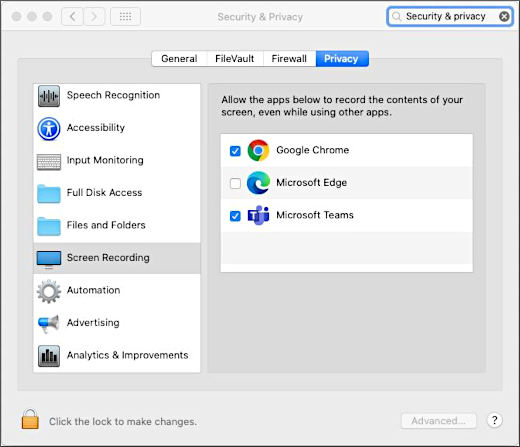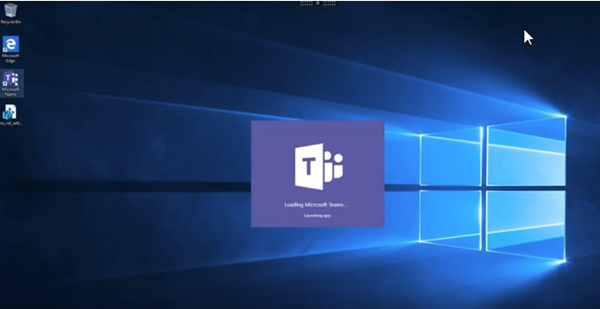- Remote Control Through Microsoft Teams
- Microsoft Teams Remote Desktop Camera
- Windows 10 Enable Remote Desktop
- Microsoft Teams Remote Desktop Server
Teams across the globe are moving to remote work. Microsoft aims to keep teams connected while they work apart by making Microsoft Teams available to as many people as possible. Teams allows you to chat, meet, call, learn, and collaborate all in one place. Sign up and start using Teams for free today, plus read on for tips for working from home.
Microsoft Windows Virtual Desktop's scalability has been especially helpful during the remote work boom, but IT must learn how Windows Virtual Desktop integrates with other business technologies, such as Microsoft Teams. The TeamViewer remote connectivity cloud platform enables secure remote access to any device, across platforms, from anywhere, anytime. TeamViewer connects computers, smartphones, servers, IoT devices, robots — anything — with fast, high performance connections through our global access network even in outer space or low bandwidth environments. Re: Does Microsoft support Teams in RDS (Remote Desktop Services/Citrix Desktop)? I've got it running a VDI environment without issue. That being said I haven't tried to do a voice/video call yet. Microsoft Teams; In this article. This article describes the requirements and limitations for using Microsoft Teams in a remote desktop services (RDS) environment. Remote Desktop Services (RDS) is the platform of choice for building virtualization solutions for every end customer need.
Desktop sharing lets users present a screen or app during a meeting or chat. Admins can configure screen sharing in Microsoft Teams to let users share an entire screen, an app, or a file. You can let users give or request control, allow PowerPoint sharing, add a whiteboard, and allow shared notes. You can also configure whether anonymous or external users can request control of the shared screen. External participants in Teams meetings can be categorized as follows:
- Anonymous user
- Guest users
- B2B user
- Federated user
To configure screen sharing, you create a new meetings policy and then assign it to the users you want to manage.
Gta 5 na mac os. In the Microsoft Teams admin center
Select Meetings > Meeting policies.
On the Meeting policies page, select Add.
Give your policy a unique title and enter a brief description.
Under Content sharing, choose a Screen sharing mode from the drop-down list:
- Entire screen – lets users share their entire desktop.
- Single application – lets users limit screen sharing to a single active application.
- Disabled – Turns off screen sharing.
Note

You don't have to enable the calling policy in order for users to use screen share from chat. However, their audio is turned off until they unmute themselves. In addition, the user sharing the screen can click Add Audio to enable audio. If the calling policy is disabled, users won't be able to add audio to the screen share from a chat session.
Turn the following settings on or off:
- Allow a participant to give or request control – lets members of the team give or request control of the presenter's desktop or application.
- Allow an external participant to give or request control – This is a per-user policy. Whether an organization has this set for a user doesn't control what external participants can do, regardless of what the meeting organizer has set. This parameter controls whether external participants can be given control or request control of the sharer's screen, depending on what the sharer has set within their organization's meeting policies.
- Allow PowerPoint sharing - lets users create meetings that allow PowerPoint presentations to be uploaded and shared.
- Allow whiteboard – lets users share a whiteboard.
- Allow shared notes – lets users take shared notes.
Click Save.
Use PowerShell to configure shared desktop
You can also use the Set-CsTeamsMeetingPolicy cmdlet to control desktop sharing. Set the following parameters:

- Description
- ScreenSharingMode
- AllowPrivateCalling
- AllowParticipantGiveRequestControl
- AllowExternalParticipantGiveRequestControl
- AllowPowerPointSharing
- AllowWhiteboard
- AllowSharedNotes
Learn more about using the csTeamsMeetingPolicy cmdlet.
-->This article describes the requirements and limitations for using Microsoft Teams in a remote desktop services (RDS) environment.
What is RDS?
Remote Desktop Services (RDS) is the platform of choice for building virtualization solutions for every end customer need. RDS lets you deliver individual virtualized applications, provide secure mobile and remote desktop access, and provide end users the ability to run their applications and desktops from the cloud.
Todoist on windows. RDS offers deployment flexibility, cost efficiency, and extensibility. RDS is delivered through a variety of deployment options, including Windows Server 2016 for on-premises deployments, Microsoft Azure for cloud deployments, and a robust array of partner solutions.Depending on your environment and preferences, you can set up the RDS solution for session-based virtualization, as a virtual desktop infrastructure (VDI)
Currently, Teams in a remote desktop services environment is available with support for collaboration and chat functionality. To ensure an optimal user experience, follow the guidance in this article.
Teams on RDS with chat and collaboration
If your organization wants to only use chat and collaboration features in Teams, you can set user-level policies to turn off calling and meeting functionality in Teams.
Set policies to turn off calling and meeting functionality

You can set policies by using the Microsoft Teams admin center or PowerShell. It might take some time (a few hours) for the policy changes to propagate. If you don't see changes for a given account immediately, try again in a few hours.
Remote Control Through Microsoft Teams
Calling polices: Teams includes the built-in DisallowCalling calling policy, in which all calling features are turned off. Assign the DisallowCalling policy to all users in your organization who use Teams in a virtualized environment.
Meeting policies: Teams includes the built-in AllOff meeting policy, in which all meeting features are turned off. Assign the AllOff policy to all users in your organization who use Teams in a virtualized environment.
Assign policies using the Microsoft Teams admin center
To assign the DisallowCalling calling policy and the AllOff meeting policy to a user:
In the left navigation of the Microsoft Teams admin center, go to Users.
Select the user by selecting to the left of the user name, and then select Edit settings.
Do the following steps:
a. Under Calling policy, select DisallowCalling.
b. Under Meeting policy, select AllOff.
Select Apply.
To assign a policy to multiple users at a time:

- In the left navigation of the Microsoft Teams admin center, go to Users, and then search for the users or filter the view to show the users you want.
- In the ✓ (check mark) column, select the users. To select all users, select the ✓ (check mark) at the top of the table.
- Select Edit settings, make the changes that you want, and then select Apply.
Or, you can also do the following steps:
In the left navigation of the Microsoft Teams admin center, go to the policy you want to assign. For example:
- Go to Voice > Calling policies, and then select DisallowCalling.
- Go to Meetings > Meeting policies, and then select AllOff.
Select Manage users.
In the Manage users pane, search for the user by display name or by user name, select the name, and then select Add. Repeat this step for each user that you want to add.
When you're finished adding users, select Save. Toyota subcompact suv.
Assign policies using PowerShell
Microsoft Teams Remote Desktop Camera
The following example shows how to use the Grant-CsTeamsCallingPolicy to assign the DisallowCalling calling policy to a user.
To learn more about using PowerShell to manage calling policies, see Set-CsTeamsCallingPolicy.
Windows 10 Enable Remote Desktop
The following example shows how to use the Grant-CsTeamsMeetingPolicy to assign the AllOff meeting policy to a user.
Microsoft Teams Remote Desktop Server
To learn more about using PowerShell to manage meeting policies, see Set-CsTeamsMeetingPolicy.
